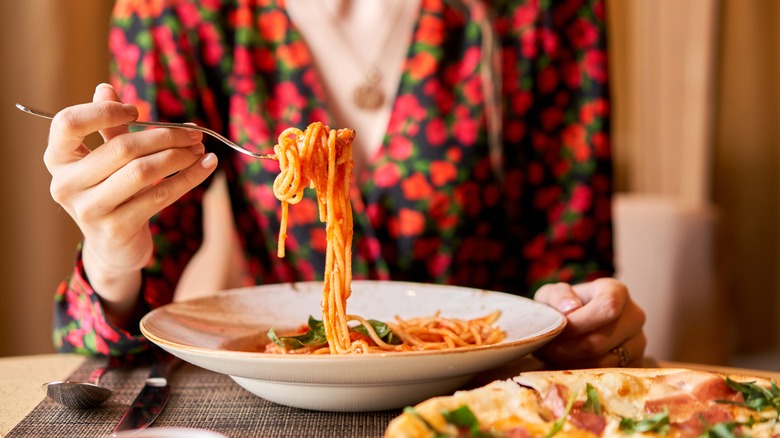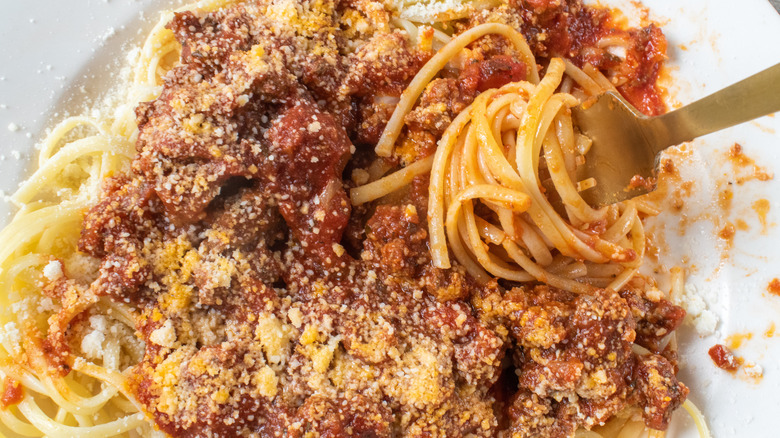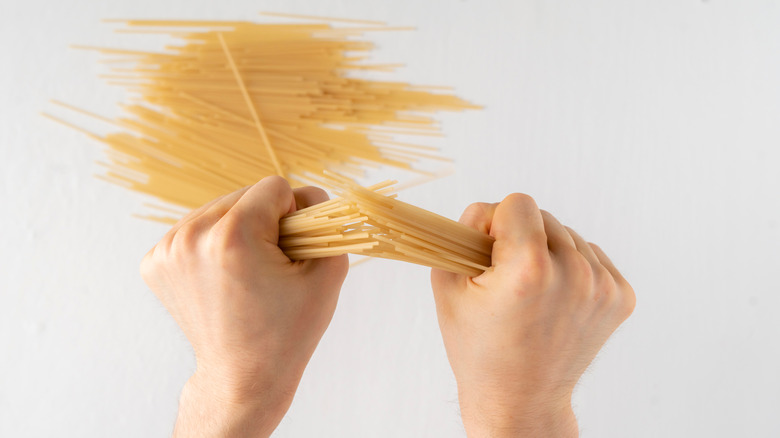Why Cutting Spaghetti Is Bad Italian Dining Etiquette
It's been ingrained in most people's heads since childhood that cutting food into bite-sized pieces is important. This practice not only helps prevent choking but also contributes to good table manners. The rule is simple: If something is too big to fit on your fork, cut it up first. You might think this would apply to spaghetti as well. Sure, most people understand that twirling the long strands of pasta onto your fork is the ideal method, but not everyone is an expert at it. As an alternative, why not just cut the spaghetti?
As it turns out, this approach is a big no-no in Italian dining etiquette. Pasta is a significant part of Italian culture and a staple in its cuisine; therefore, it should be treated with respect. Spaghetti is long for a reason — it's meant to be eaten that way. Of course, no one wants to make a mess while eating, so if you struggle with twirling your spaghetti and end up with a face full of marinara sauce, the solution is simple: Order something else.
Twirl like an Italian
To Italians, there's only one way to eat spaghetti: twirl it around your fork. However, this technique is not as easy as it sounds and takes some practice to perfect. Stabbing your fork into a pile of spaghetti and starting to twirl will likely leave you with a forkful of pasta the size of Mars — good luck eating that politely! Instead, try separating a few strands of the pasta at a time, gently twirling them around your fork while pulling them away from the rest of the pile. When you reach the end of the strands, you should have a bite-sized nest of pasta that can be eaten gracefully.
If you don't master this technique immediately, don't worry. Most Italians have been practicing this their whole lives. So, even if it takes you some time, remember that it's better than cutting your spaghetti. The same method applies to other long types of pasta like fettuccine, linguine, and bucatini.
Do what you want behind closed doors
Proper spaghetti etiquette becomes especially crucial when dining with Italians or in a fine Italian restaurant. If your twirling skills are lacking, consider ordering a short pasta like penne or rigatoni. This way, you can enjoy the meal without worrying about proper technique. In more casual settings or the privacy of your own home, feel free to eat your spaghetti as you wish, whether that involves cutting it or using a spoon (also taboo in Italy).
On a related note, the practice of breaking dry spaghetti strands before boiling them is enough to make an Italian nonna faint. Even if it seems like this will make plating the spaghetti and eating it easier, avoid doing it. Shortening the pasta compromises the dish, as part of the pleasure of twirling spaghetti is that it picks up more sauce in the process. To do otherwise is to cut yourself short — no pun intended.



